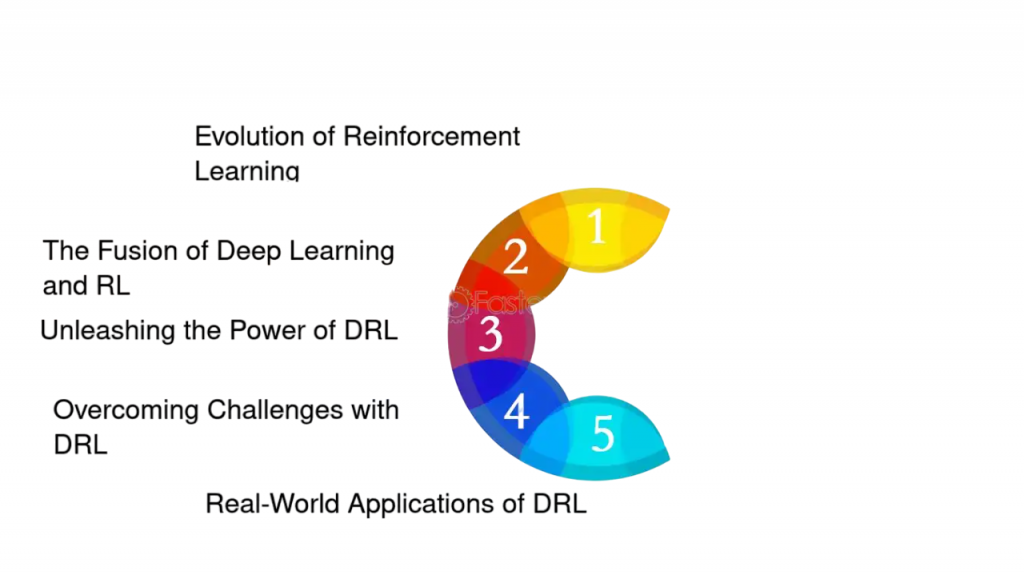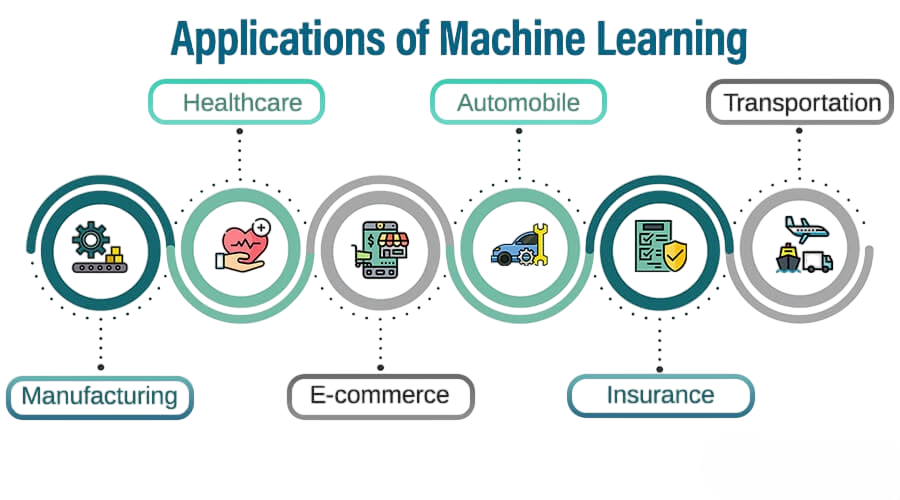
- Understanding Deep Learning
- The Rise of Deep Learning
- How Deep Learning Works
- Key Components of Deep Learning Systems
- Applications Across Industries
- Opportunities Created by Deep Learning
- Challenges and Limitations
- Ethical and Societal Implications
- The Future of Deep Learning
Understanding Deep Learning
Deep learning is a subset of artificial intelligence that enables machines to learn from vast amounts of data, identify patterns, and make decisions with minimal human intervention. Inspired by the structure of the human brain, it uses artificial neural networks composed of interconnected layers of nodes, or “neurons,” to process information. Each layer extracts increasingly complex features from the input data, allowing the system to recognize intricate patterns Machine Learning Training in images, text, audio, and more. Unlike traditional algorithms, deep learning models improve automatically as they are exposed to more data, making them highly adaptive and powerful. Applications span across industries from autonomous vehicles and healthcare diagnostics to natural language processing and recommendation systems. By mimicking certain aspects of human cognition, deep learning is not just automating tasks but enabling machines to perform cognitive functions such as perception, reasoning, and even creativity, fundamentally transforming how we interact with technology.
The Rise of Deep Learning
Deep learning has emerged as one of the most transformative technologies of the 21st century, evolving from a niche research area into a cornerstone of modern artificial intelligence. Its rise has been fueled by the explosion of data, advances in computing power, and breakthroughs in neural network architectures Best Deep Learning Books to Read. Early AI systems relied on handcrafted rules, which limited their ability to handle complex, real-world tasks. Deep learning changed this paradigm by enabling machines to learn patterns directly from raw data, achieving remarkable accuracy in areas like image recognition, speech processing, and natural language understanding.

Tech giants, startups, and research institutions alike have invested heavily in deep learning, driving rapid innovation and deployment across industries. As algorithms become more sophisticated and datasets larger, deep learning continues to push the boundaries of what machines can achieve, making it an integral part of our digital future.
Ready to Get Certified in Machine Learning? Explore the Program Now Machine Learning Online Training Offered By ACTE Right Now!
How Deep Learning Works
- Inspired by the Brain: Uses artificial neural networks modeled on the structure of human neurons.
- Layers of Processing: Data passes through multiple layers (input, hidden, output), with each layer extracting increasingly complex features.
- Neurons and Weights: Each neuron applies a weight to its inputs and passes the result through an activation function to determine output.
- Training with Data: Networks learn by processing large datasets and adjusting weights to minimize errors The Best Machine Learning Tools.
- Backpropagation: A method to optimize the network by calculating errors and propagating them backward through layers.
- Learning Patterns: Capable of recognizing complex patterns in images, text, audio, and other data types.
- Generalization: Once trained, models can make predictions or decisions on new, unseen data.
- Continuous Improvement: Performance improves automatically as more data and computational power are added.
Key Components of Deep Learning Systems
- Neural Networks: The core architecture, consisting of interconnected layers of artificial neurons.
- Layers: Input layer (receives data), hidden layers (process features), and output layer (produces predictions).
- Neurons: Basic units that process inputs, apply weights, and pass signals through activation functions.
- Weights and Biases: Parameters that the network adjusts during training to minimize errors.
- Activation Functions: Functions like ReLU, Sigmoid, or Tanh that introduce non-linearity, allowing the network to model complex patterns Machine Learning Engineer Salary.
- Loss Function: Measures the difference between predicted outputs and actual results, guiding optimization.
- Optimizer: Algorithms like SGD or Adam that adjust weights to reduce the loss function.
- Training Data: Large datasets used to teach the network to recognize patterns and make accurate predictions.
- Backpropagation: Technique for propagating errors backward through the network to update weights effectively.
- Healthcare: Medical imaging analysis, diagnostics, and drug discovery.
- Automotive: Self-driving cars, traffic prediction, and safety systems.
- Finance: Fraud detection, algorithmic trading, An Overview of ML on AWS and risk assessment.
- Retail & E-commerce: Personalized recommendations, inventory optimization, and customer behavior analysis.
- Entertainment: Content recommendation, video analysis, and game AI.
- Agriculture: Crop monitoring, yield prediction, and automated harvesting.
- Manufacturing: Predictive maintenance, quality control, and process optimization.
- Cybersecurity: Threat detection, anomaly detection, and intrusion prevention.
- Logistics & Supply Chain: Route optimization, demand forecasting, and inventory management.
- Bias and Fairness: AI systems can inherit biases from training data, leading to unfair or discriminatory outcomes.
- Privacy Concerns: Deep learning often relies on large datasets, raising issues around personal data collection and surveillance.
- Job Displacement: Automation powered by deep learning may replace human labor, impacting employment in certain sectors.
- Accountability and Transparency: Black-box models make it difficult to explain decisions, complicating responsibility for errors What Is Machine Learning .
- Security Risks: Deep learning can be exploited for malicious purposes, such as deepfakes or cyberattacks.
- Social Manipulation: AI-driven recommendations and content generation can influence opinions, behaviors, and political outcomes.
- Ethical Decision-Making: Machines making choices in sensitive areas like healthcare or law enforcement raise moral questions.
- Accessibility and Inequality: Unequal access to AI technology may widen economic and technological gaps between communities.
- Bias and Fairness: AI systems can inherit biases from training data, leading to unfair or discriminatory outcomes.
- Privacy Concerns:Deep learning often relies on large datasets, raising issues around personal data collection and surveillance.
- Job Displacement: Automation powered by deep learning may replace human labor, impacting employment in certain sectors.
- Accountability and Transparency: Black-box models make it difficult to explain decisions, complicating responsibility for errors Bagging vs Boosting in Machine Learning.
- Security Risks: Deep learning can be exploited for malicious purposes, such as deepfakes or cyberattacks.
- Social Manipulation: AI-driven recommendations and content generation can influence opinions, behaviors, and political outcomes.
- Ethical Decision-Making: Machines making choices in sensitive areas like healthcare or law enforcement raise moral questions.
- Accessibility and Inequality: Unequal access to AI technology may widen economic and technological gaps between communities.
To Explore Machine Learning in Depth, Check Out Our Comprehensive Machine Learning Online Training To Gain Insights From Our Experts!
Applications Across Industries

Opportunities Created by Deep Learning
Deep learning is opening unprecedented opportunities across multiple domains, empowering innovation and efficiency. In technology, it enables the development of intelligent systems capable of automation, predictive analytics, and complex decision-making. Businesses can leverage deep learning for personalized marketing, customer engagement, and operational optimization Machine Learning Training. In healthcare, it supports early disease detection, precision medicine, and accelerated drug discovery. Education and research benefit from adaptive learning tools and data-driven insights. Additionally, deep learning is creating new career paths in AI development, data science, and ethical AI oversight. By turning massive datasets into actionable intelligence, deep learning is not just solving existing problems but also unlocking entirely new possibilities for growth, creativity, and societal advancement.
Looking to Master Machine Learning? Discover the Machine Learning Expert Masters Program Training Course Available at ACTE Now!
Challenges and Limitations
Despite its transformative potential, deep learning faces significant challenges and limitations. Training deep neural networks requires massive amounts of data and computational resources, which can be costly and environmentally demanding. Models are often opaque, making it difficult to understand their decision-making processes, raising concerns about transparency and accountability Decision Trees in Machine Learning. Bias in training data can lead to unfair or discriminatory outcomes, particularly in sensitive applications like hiring, law enforcement, and healthcare. Deep learning systems can also struggle with generalization, performing poorly on data that differs from their training sets. Additionally, overreliance on automated systems may reduce human oversight and critical thinking. Addressing these challenges is essential to ensure deep learning is deployed safely, ethically, and effectively across industries.
Applications of Machine Learning
Preparing for Machine Learning Job Interviews? Have a Look at Our Blog on Machine Learning Interview Questions and Answers To Ace Your Interview!
Ethical and Societal Implications
The Future of Deep Learning
The future of deep learning promises even greater innovation and integration into everyday life. Advances in neural network architectures, computational power, and data availability will enable models to perform more complex tasks with higher accuracy and efficiency. We can expect deeper collaboration between humans and AI, where machines augment human creativity, decision-making,Machine Learning Training and problem-solving across industries. Ethical frameworks and regulations will play a crucial role in guiding responsible deployment, addressing bias, privacy, and accountability. As deep learning becomes more accessible, it will democratize technology, empower new applications, and unlock solutions to challenges in healthcare, climate, education, and beyond, fundamentally reshaping the way we live, work, and interact with intelligent systems.



